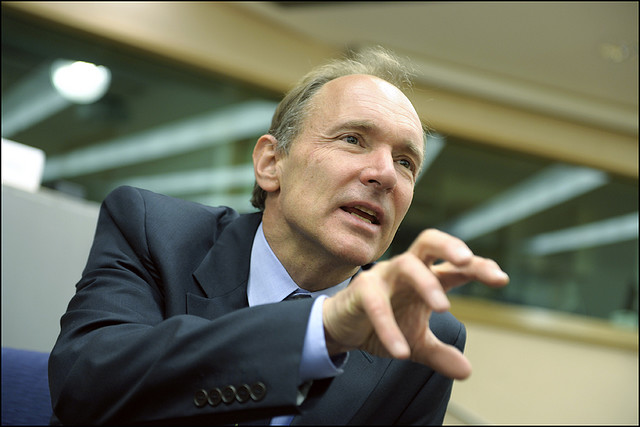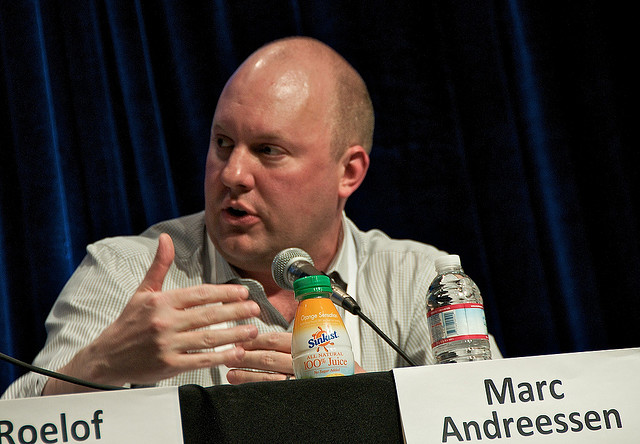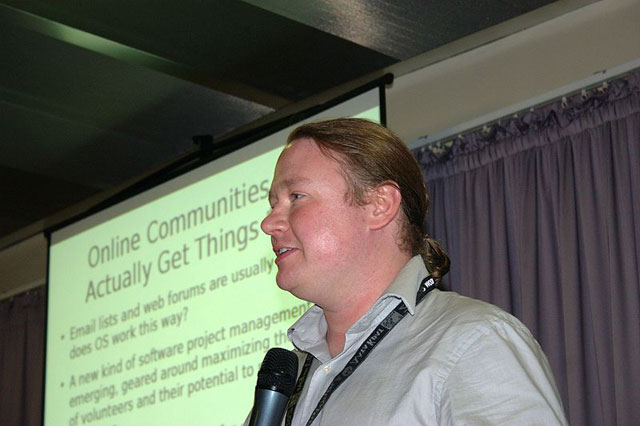10 founding fathers of the web
- Transfer
 Although the phrase “founding fathers” is often used in conjunction with people like Benjamin Franklin, Thomas Jefferson, and George Washington, we would like to think about this expression globally.
Although the phrase “founding fathers” is often used in conjunction with people like Benjamin Franklin, Thomas Jefferson, and George Washington, we would like to think about this expression globally. And what is more global than the World Wide Web?
So we will try to consider 10 individuals who have played an important role in shaping the World Wide Web and Internet culture.
1. Tim Berners-Lee

Tim Berners-Lee is considered the inventor of the World Wide Web. Berners-Lee and his team created the world's first browser, WorldWideWeb, the first web server and HTML hypertext markup language.
Berners-Lee founded and now leads the World Wide Web Consortium (W3C), an organization that develops and implements technology standards for the World Wide Web. Although the emergence of the Internet itself dates back to 1969, it was Berners-Lee who was able to combine the concepts of the Internet and hypertext, as well as lay the foundation for the Internet in the form that we know today.
Since CERN (European Organization for Nuclear Research) did not make the World Wide Web proprietary, the global hypertext project was approved and implemented.
2. Mark Andressen

Marc Andreessen is known as a co-author of Mosaic, the first widely used browser. He also founded Netscape Communications Corporation.
Although Mosaic was not the first graphical browser, it was the first to be widely known. In addition, it was the first browser that could display images with text.
After developing Mosaic, Andreessen co-founded Netscape Communications. The flagship product of the company - Netscape Navigator - had a huge impact, helping to attract ordinary users to the web. In 1998, Netscape announced that the project would be developed as part of the open source community. This project, known as Mozilla, became the foundation of what we now know as Firefox.
3. Brian Belendorf

Brian Belendorf was the main developer of the Apache web server and one of the founding members of the Apache Group. During the development of the HotWired project - a site for Wired magazine - he was faced with the fact that the web server software most used at that time (developed at the National Center for Supercomputing Applications at the University of Illinois at Urbana-Champaign) could not cope with the user registration system. Therefore, Belendorf created a patch to support HotWired requirements. It turned out that not one Belendorf was busy correcting the NCSA code at that time, so he put together an electronic mailing list to coordinate the work of other programmers.
By February 1995, the project was named Apache, the NCSA server code was rewritten and optimized. The genius of Apache lies not only in its freedom and openness, but also in the fact that it supports modularity. This means that providers can easily add their own extensions and plugins for optimization, which allows hundreds of sites to be hosted on a single server. Apache is still the most popular web server.
4, 5, 6. Rasmus Lerdorf, Andy Gutmans and Ziv Surasky

Lerdorf, Gutmans and Surasky are responsible for knowing how PHP is a scripting language that remains one of the most commonly used languages for creating dynamic web pages. Rasmus Lerdorf created the first version of PHP in 1995, and he was the main developer of this project for the first two versions.
In 1997, Gutmans and Suraski decided to expand PHP by rewriting the parser and creating what became known as PHP 3. They continued to rewrite the core of PHP, calling it the Zend Engine and releasing the PHP 4 based on it. Later, Gutmans and Suraski founded Zend Technologies, which still has a big impact on PHP development.
Although Perl Larry Wall was one of the first general-purpose scripting languages, the ease of use and embeddability of PHP de facto made it act as the letter Pin the acronym LAMP (Linux, Apache, MySQL, PHP).
7. Brad Fitzpatrick

Brad Fitzpatrick is known as the creator of LiveJournal, the first author of memcached and the original OpenID authentication protocol.
Fitzpatrick developed LiveJournal while studying at the university to keep his personal diary. LJ has grown into a large blogging community and has acquired many unique features, such as friend lists, the ability to create user polls, support for blog clients, the ability to send text messages to users, the ability to send messages by phone and email, create groups of friends, and much more, which later became a standard part of communities like Facebook, Tumblr, MySpace, WordPress.com and Posterous today.
LiveJournal developed and began to consume more and more resources. Fitzpatrick began to develop a projectmemcached to speed up dynamic web applications and ease the load of databases. He does this by combining free memory throughout the web server and then transferring it as needed. memcached is used on Wikipedia, Flickr, Facebook, WordPress, Twitter, Craigslist and many other projects.
8. Brendan Ike

Brendan Ike has created JavaScript and currently works as CTO at Mozilla Corporation. Ike created JavaScript by working in Netscape, first under the name Mocha, then under the name LiveScript, and finally JavaScript. JavaScript was officially released in December 1995.
JavaScript quickly became one of the most popular web programming languages, even considering that it was first used for visually unaesthetic solutions. However, time passed, and the advent of JavaScript libraries and frameworks, combined with the power of AJAX, made JavaScript a part of Internet standards.
9. John Rezig

John Rezig is the creator and lead developer of jQuery, the most popular JavaScript library on the Internet. Although there were other JavaScript libraries before jQuery, the goal of jQuery to be compatible in all browsers really sets it apart.
Especially in the past two years, jQuery has grown in popularity and is currently used by 31% of the 10,000 most visited sites. The extensibility and tools of jQuery has also made it popular in the commercial sector.
JavaScript is still one of the greatest forces at the core of Internet standards, and jQuery only helps to maintain that position.
10. Jonathan Gay
Jonathan Gay was one of the founders of FutureWave Software and for over a decade has been Flash's chief programmer.
While not everyone is a fan of Adobe Flash, it's important to remember how influential this technology has been over the past 15 years. Jonathan Gay wrote the SmartSketch vector graphics editor back in 1993 for the PenPoint operating system, and after the development of PenPoint was discontinued, SmartSketch technology was redirected to create animations that could play on web pages.
This product, FutureSplash Animator, was acquired by Macromedia in 1996 and renamed Flash. After that, Jonathan Gay became vice president of development at Macromedia and led the Flash team. Over the years, his team has implemented new Flash elements - for example, ActionScript.
However, perhaps the pinnacle of Jonathan Gay's accomplishments was that he initiated the creation of what was then known as the Flash Communication Server (now Flash Media Server), which allows Flash Player to use the RTMP protocol for streaming audio and video over the web. In essence, this technology has enabled YouTube to be YouTube.
